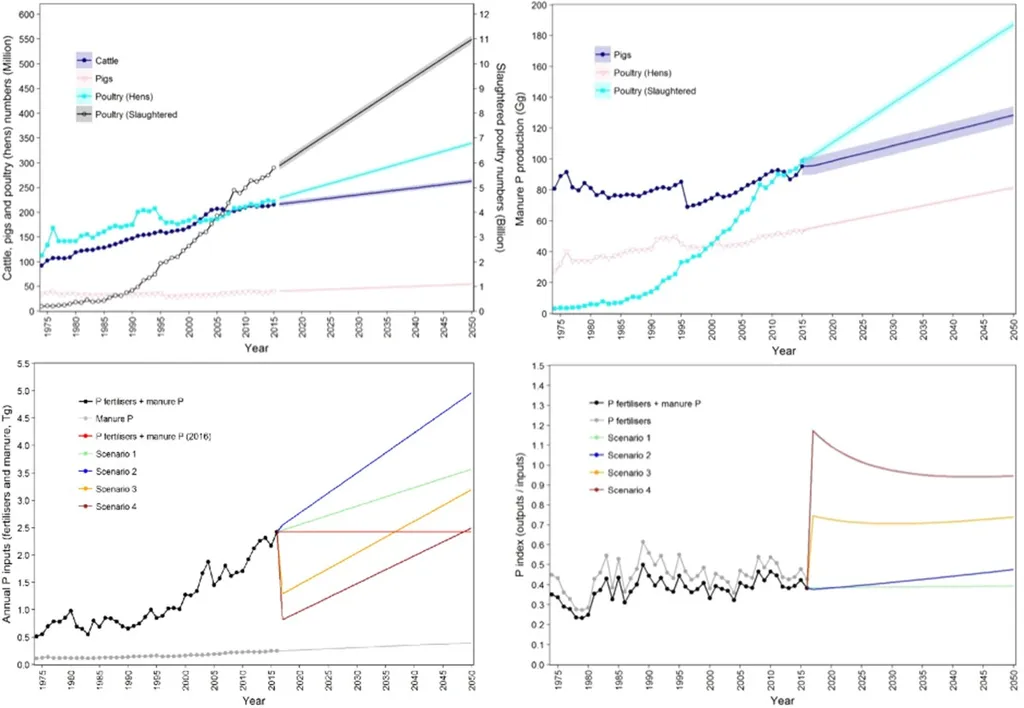In the heart of Brazil’s agricultural landscape, a promising solution to the country’s phosphorus dependency is emerging from an unlikely source: swine wastewater. A recent study, led by Caio Teves Inácio, explores the potential of struvite, a slow-release fertilizer, to revolutionize nutrient management in Brazilian agriculture. The research, published in the Revista Brasileira de Ciência do Solo (Brazilian Journal of Soil Science), sheds light on the untapped potential of struvite, particularly in subtropical and tropical regions.
Phosphorus is a critical yet limited resource in agriculture. With the global challenge of sustainable phosphorus management looming, researchers have turned their attention to struvite, a crystalline compound composed of magnesium, ammonium, and phosphate. Struvite can be recovered from manures and wastewaters, offering a circular economy approach to fertilizer production.
Inácio’s study highlights the scarcity of research on struvite’s application in tropical and subtropical climates, despite its proven benefits in temperate regions. “We found a large number of recent studies that show its predominant application for temperate and Mediterranean regions,” Inácio notes. “However, its potential as a fertilizer and better use for subtropical and tropical regions, such as Brazilian agriculture, is still unknown.”
The study reveals that struvite, with its 5% nitrogen, 12% phosphorus, and 10% magnesium content, could significantly reduce Brazil’s reliance on imported fertilizers. While crop responses to struvite have been variable, the research suggests that yields may average 10% lower than those achieved with soluble phosphorus sources. However, struvite offers a promising residual effect and can be effectively mixed with soluble P-fertilizers to boost yields.
One of the most compelling findings is struvite’s higher efficiency compared to manure, composts, or phosphate powder rocks. This could have substantial commercial implications for the energy sector, particularly in swine production hubs in the South, Southeast, and Midwest regions of Brazil. Inácio estimates that struvite production technology could be easily adopted by medium- to large-scale confined swine operations, potentially yielding some 300,000 Mg of struvite per year.
The lack of studies on Brazilian soils, particularly acidic Oxisols and no-till systems, remains a barrier to a precise evaluation of struvite’s potential. However, the research opens doors to future developments in nutrient management, offering a sustainable and locally sourced alternative to conventional fertilizers.
As the agricultural sector grapples with the challenges of sustainability and resource management, Inácio’s study provides a beacon of hope. By harnessing the power of struvite, Brazil could take a significant step towards reducing its dependency on imported fertilizers and embracing a more circular and sustainable approach to agriculture. The findings, published in the Revista Brasileira de Ciência do Solo, underscore the need for further research and investment in this promising technology, paving the way for a greener and more resilient future for Brazilian agriculture.

